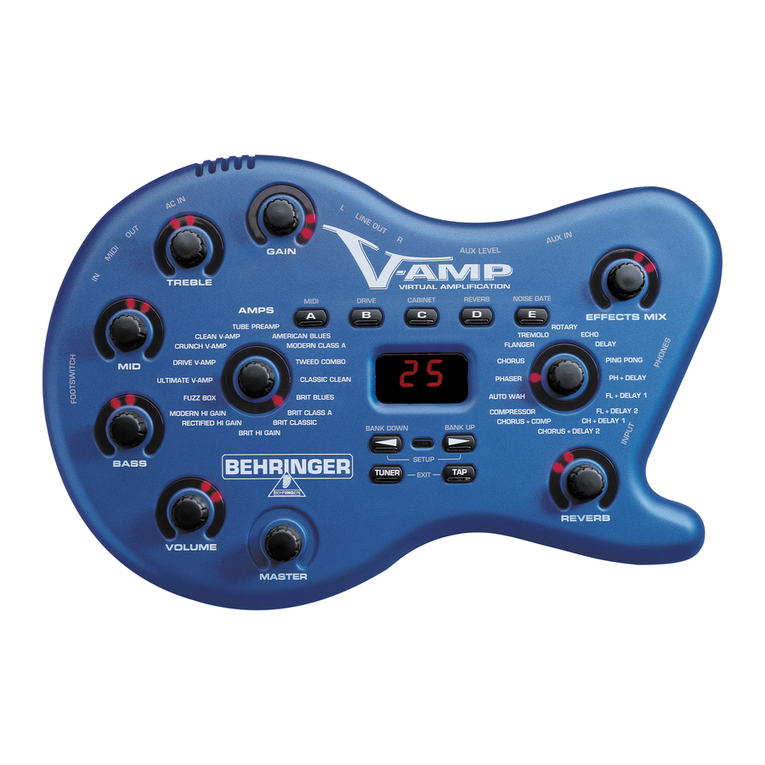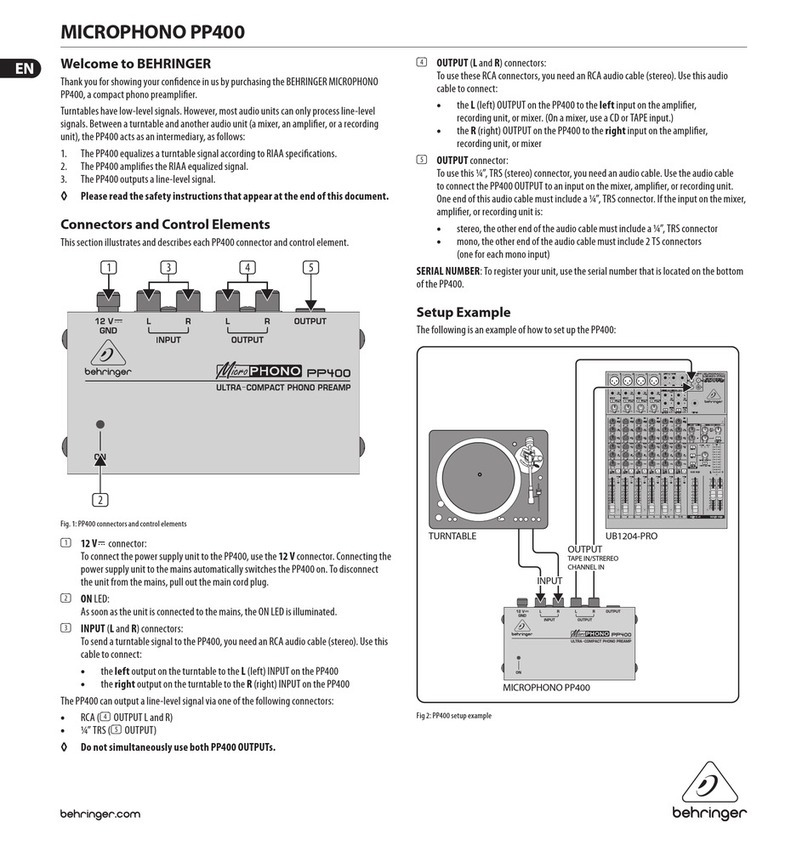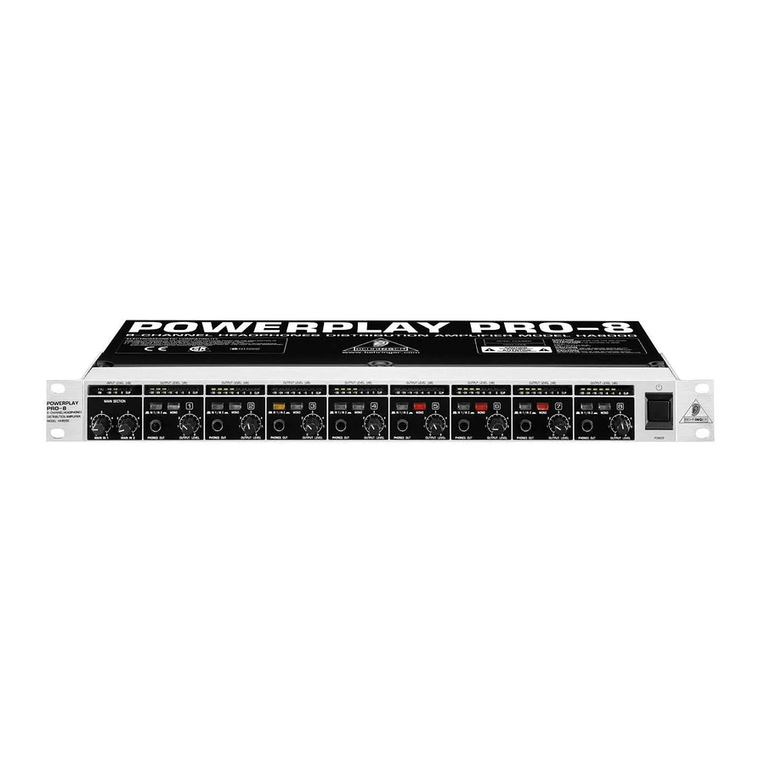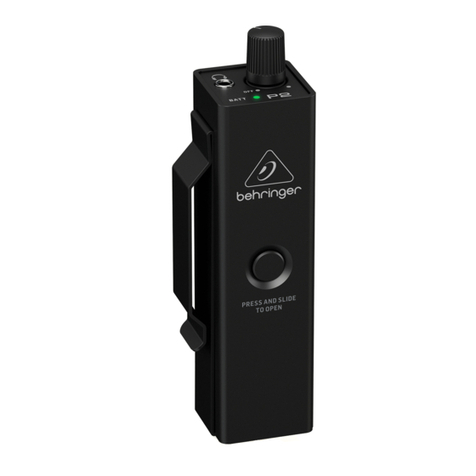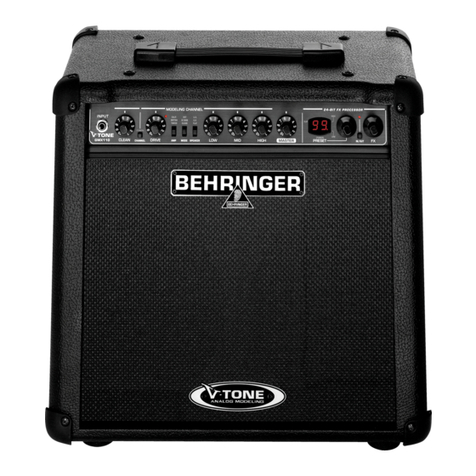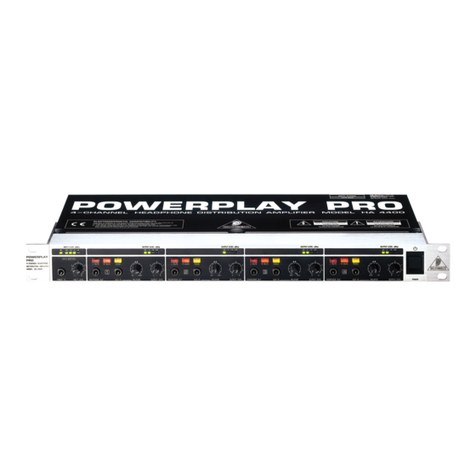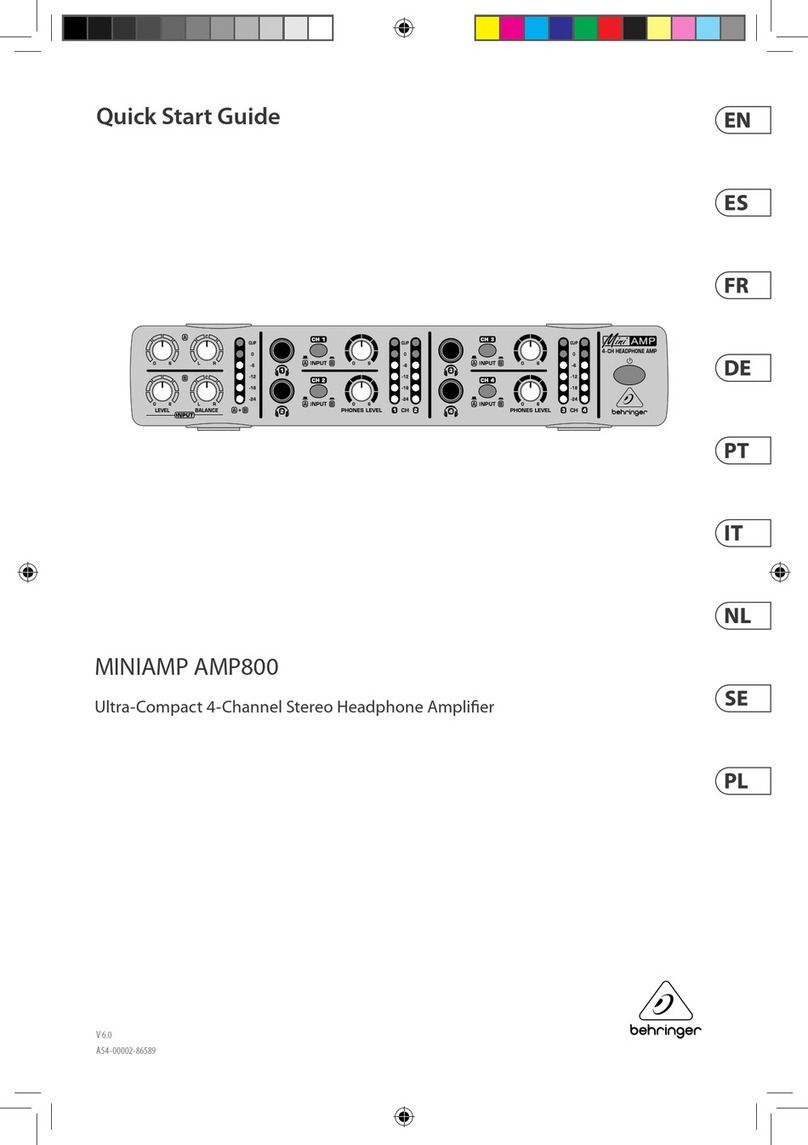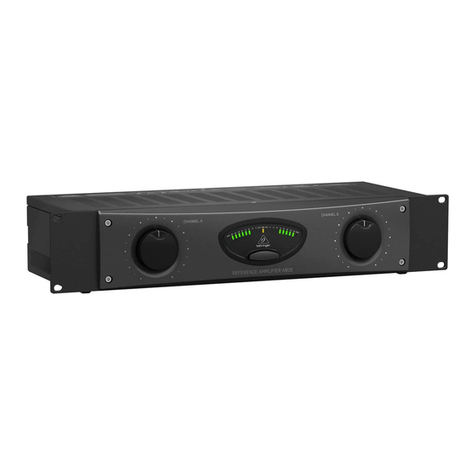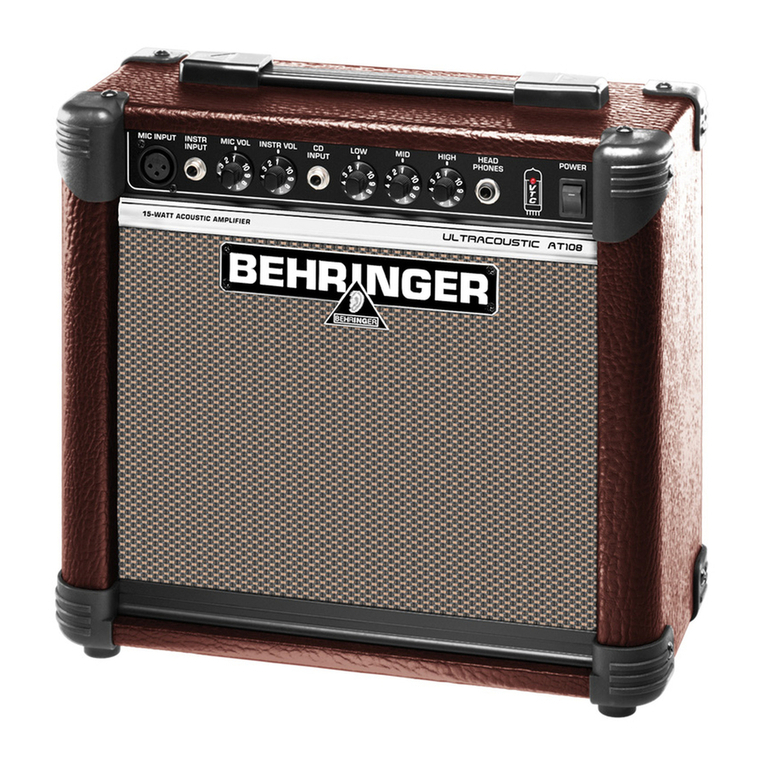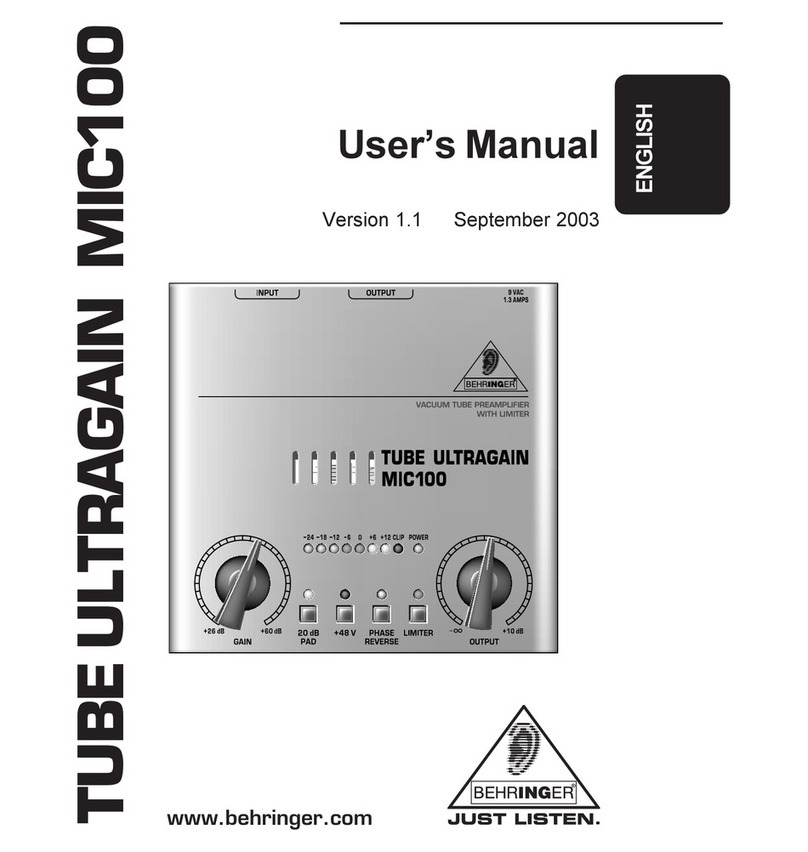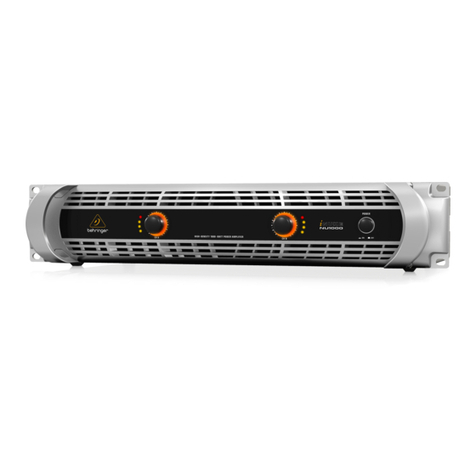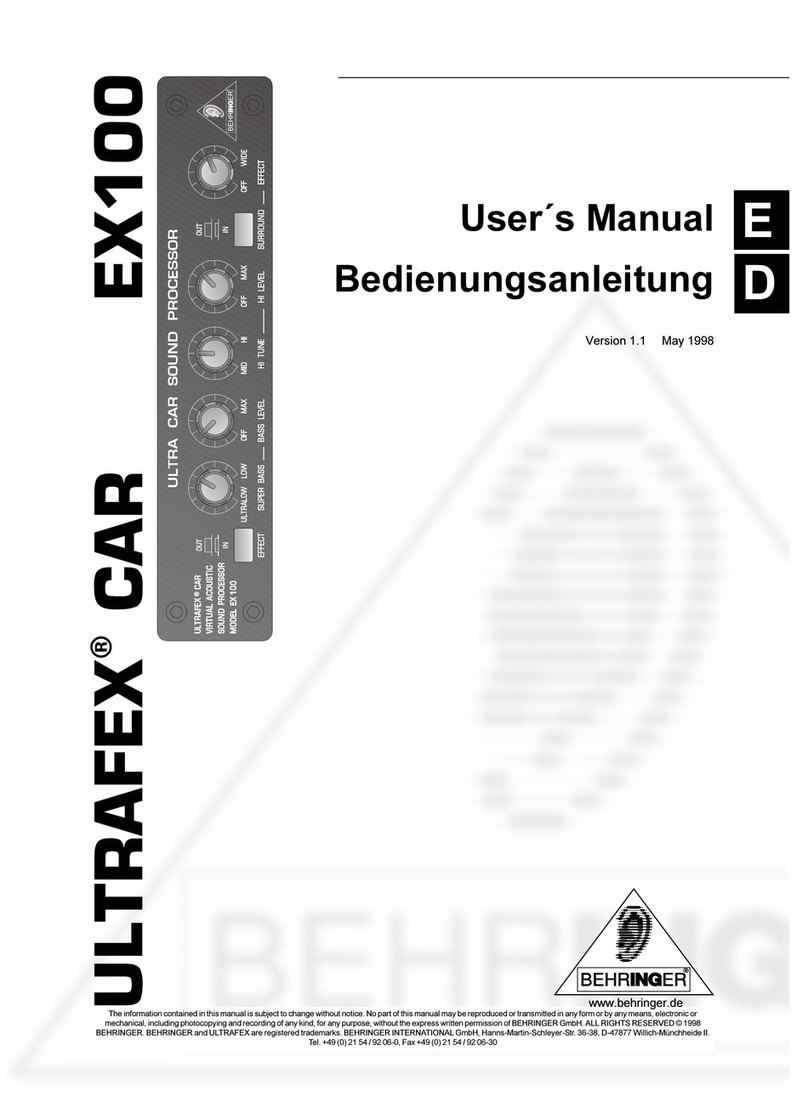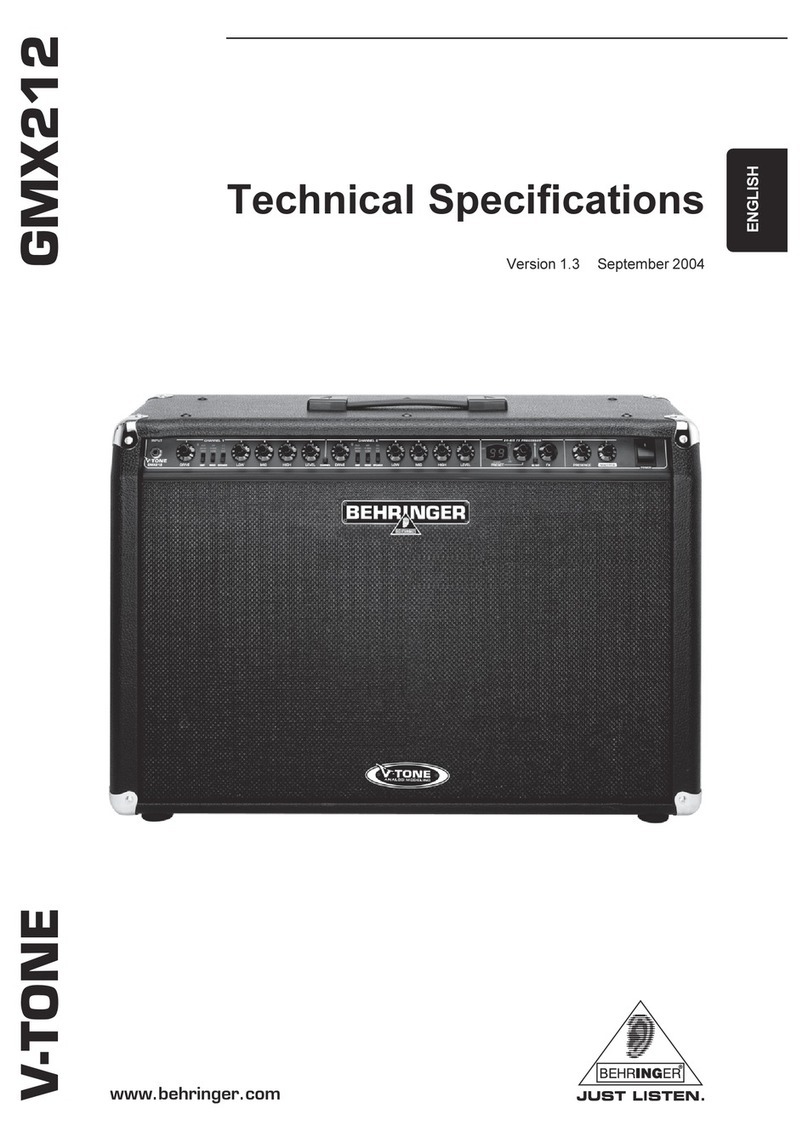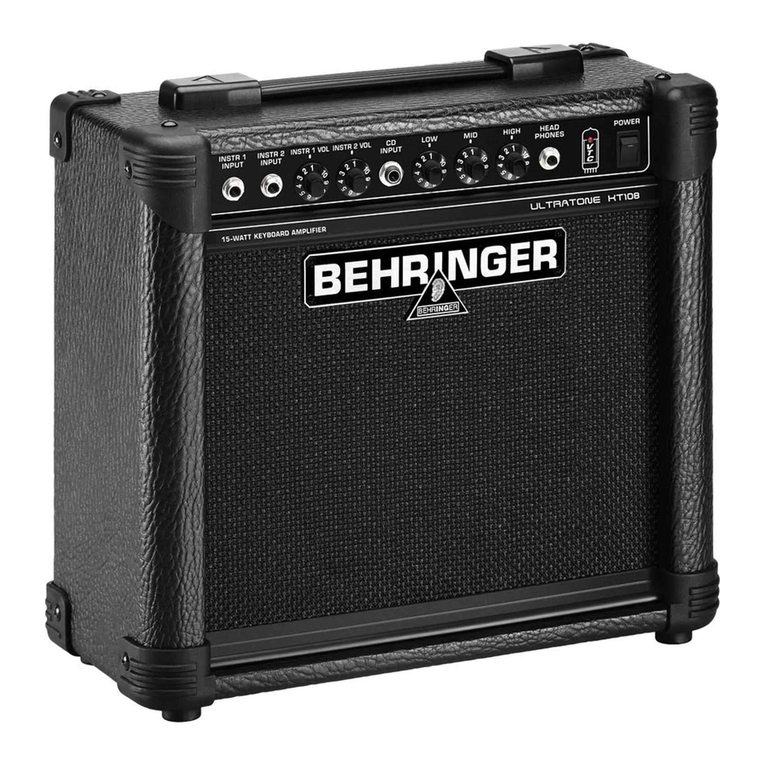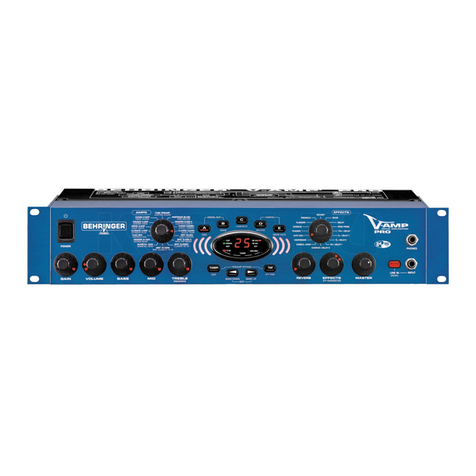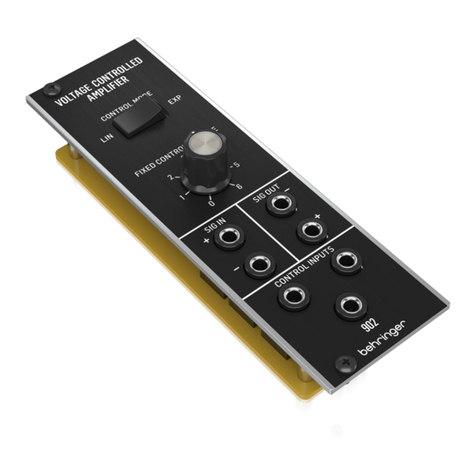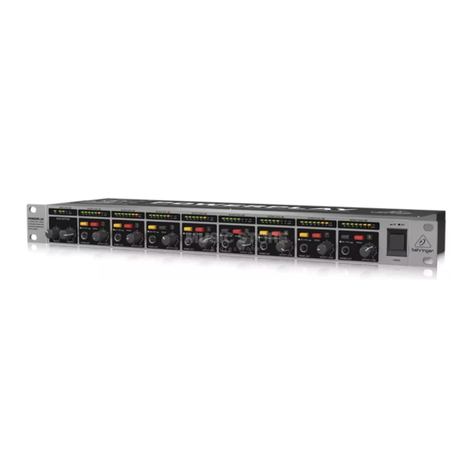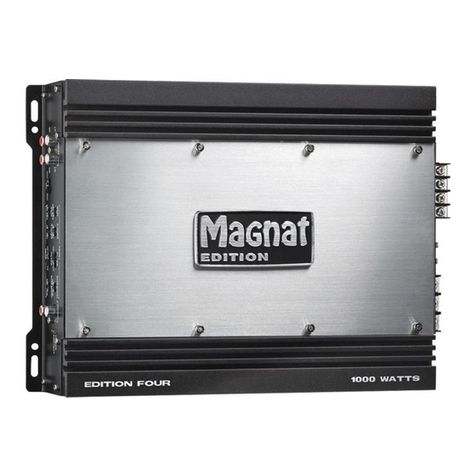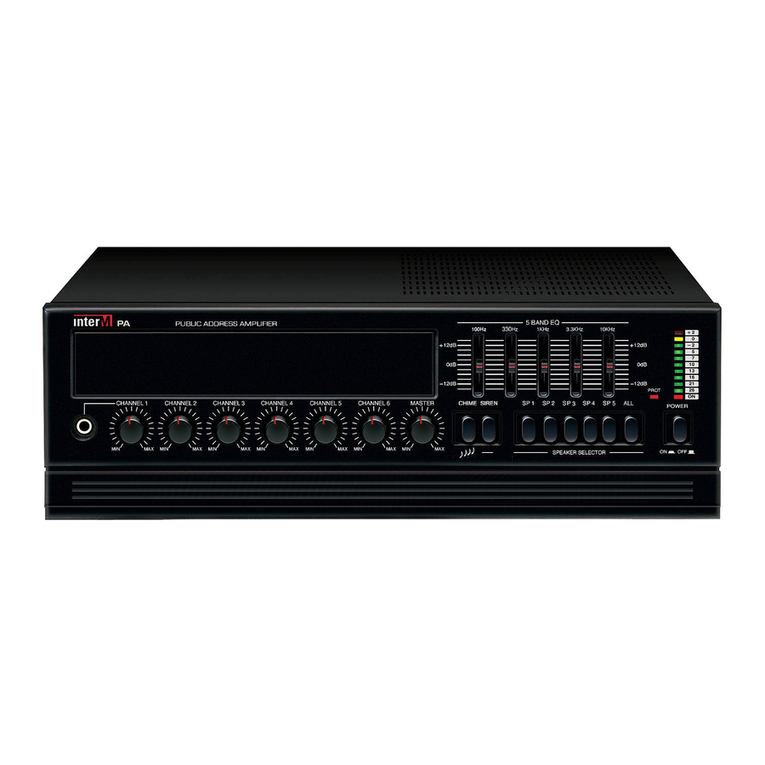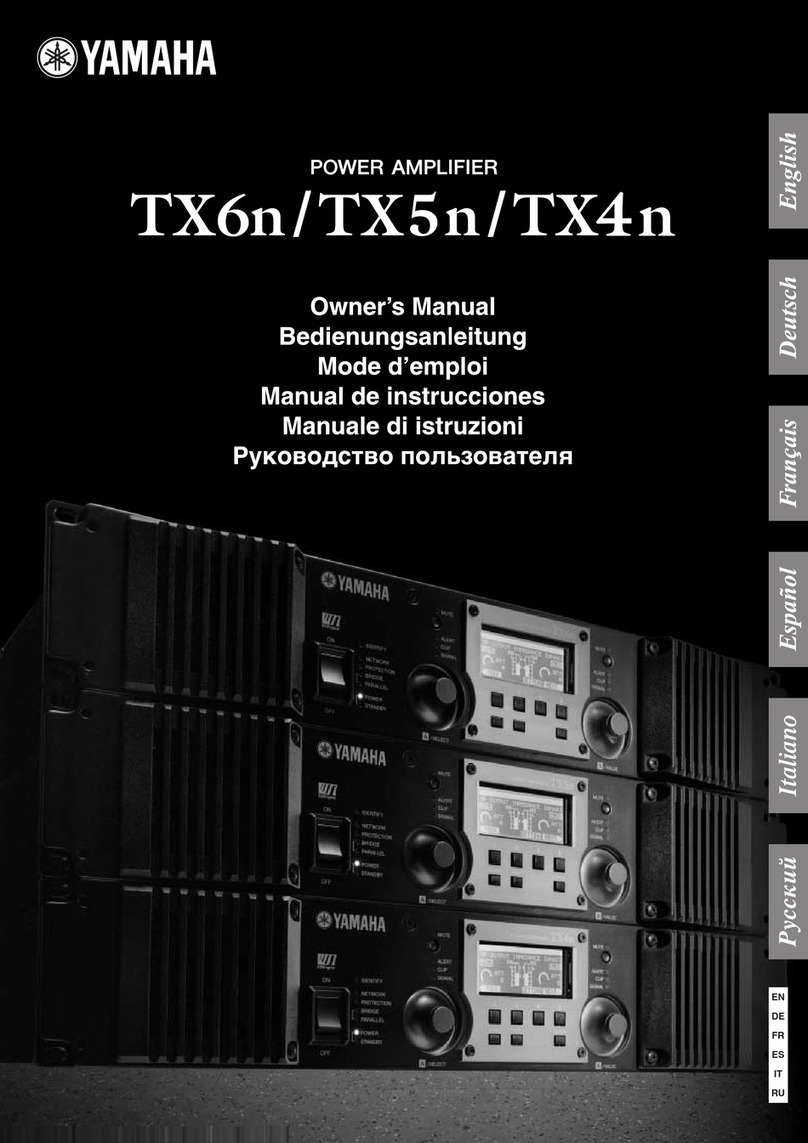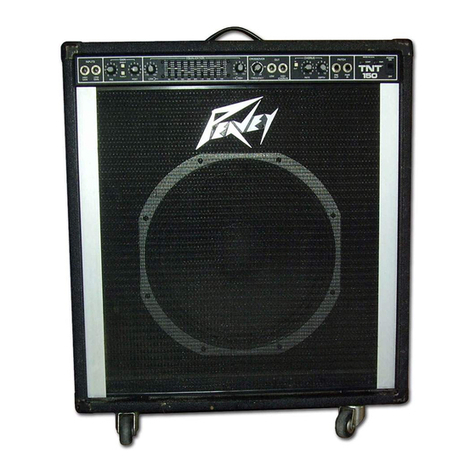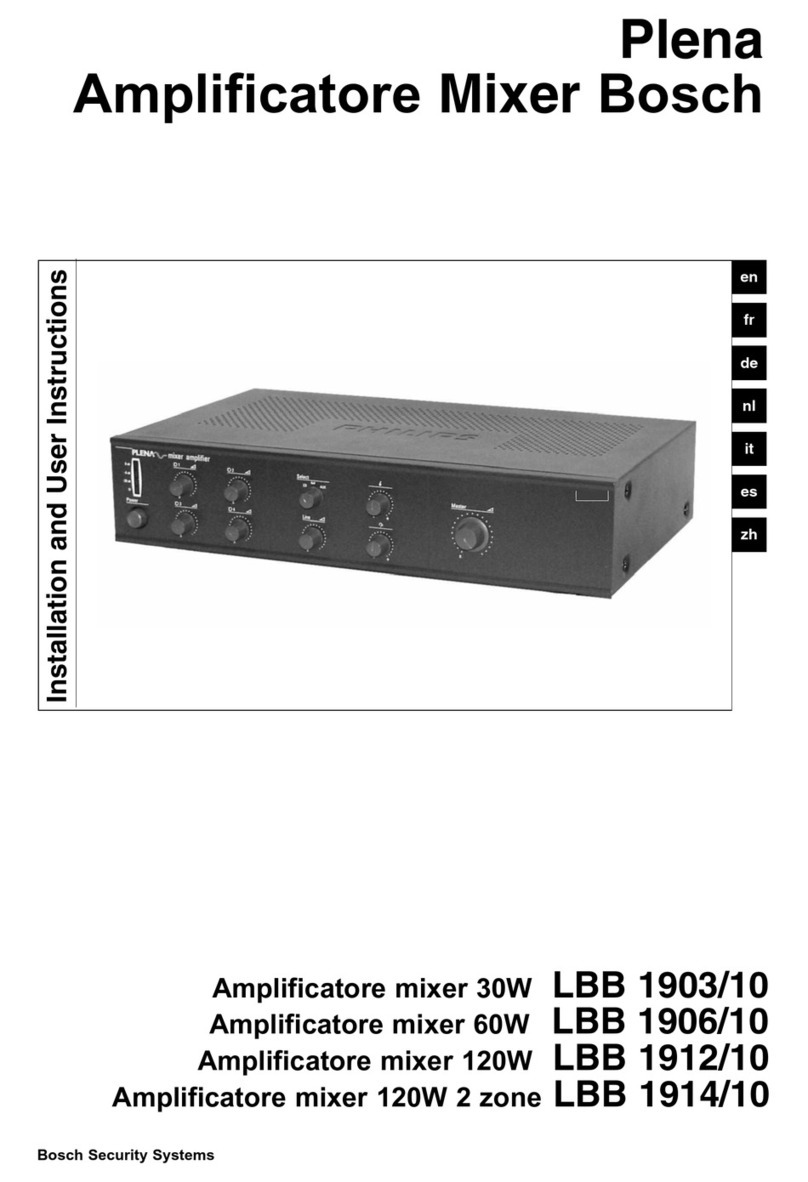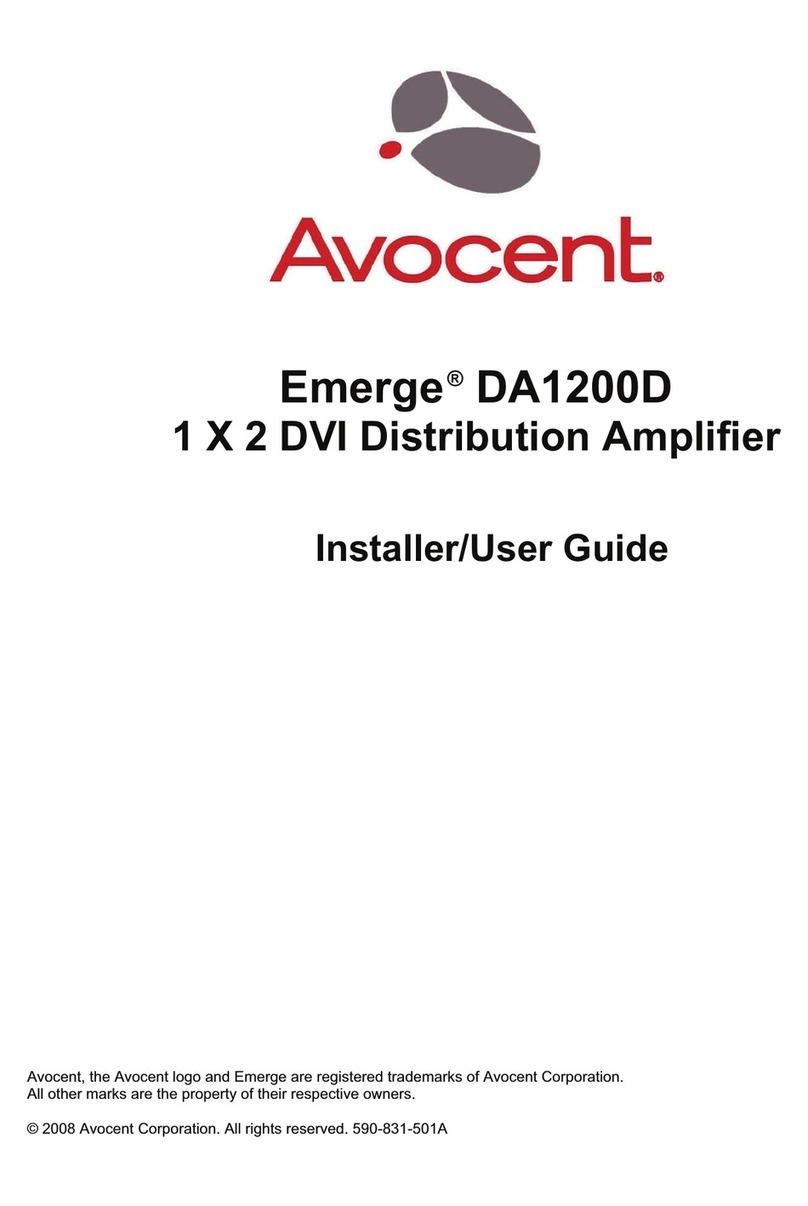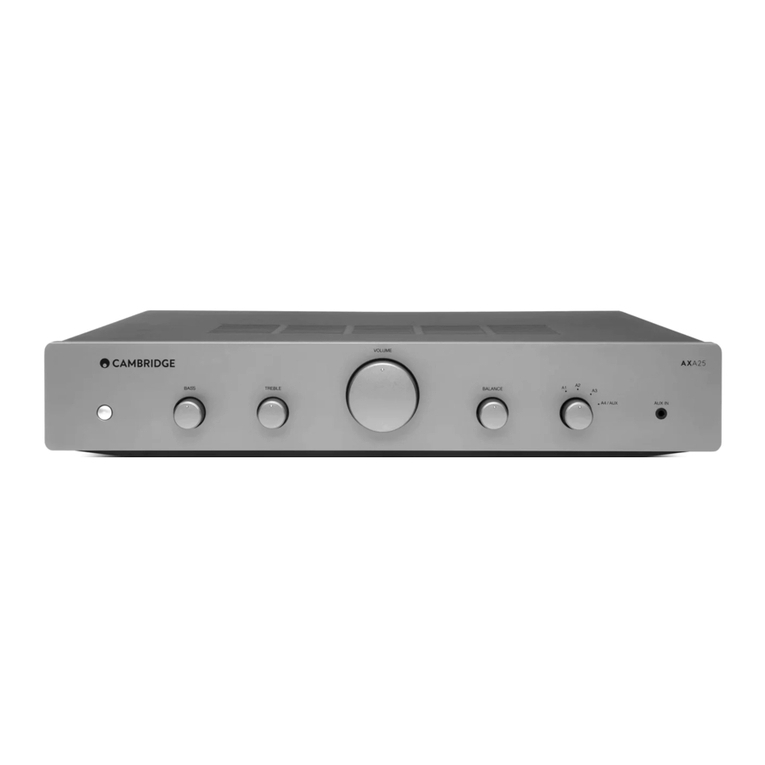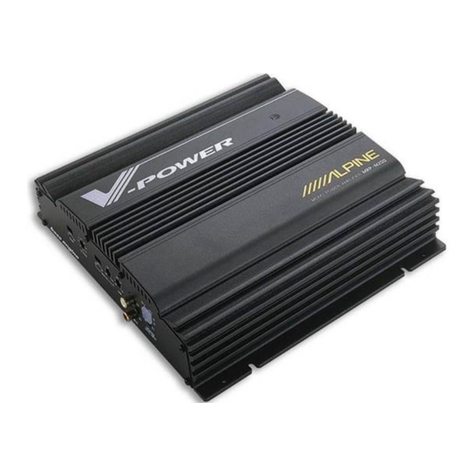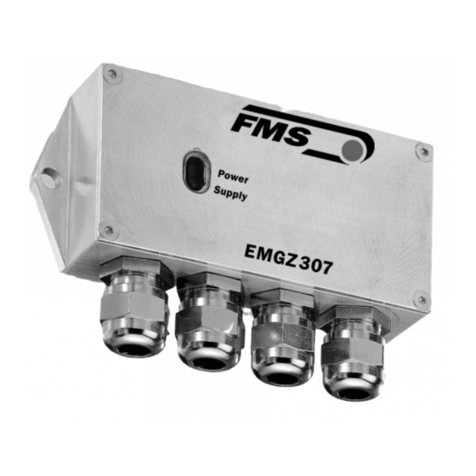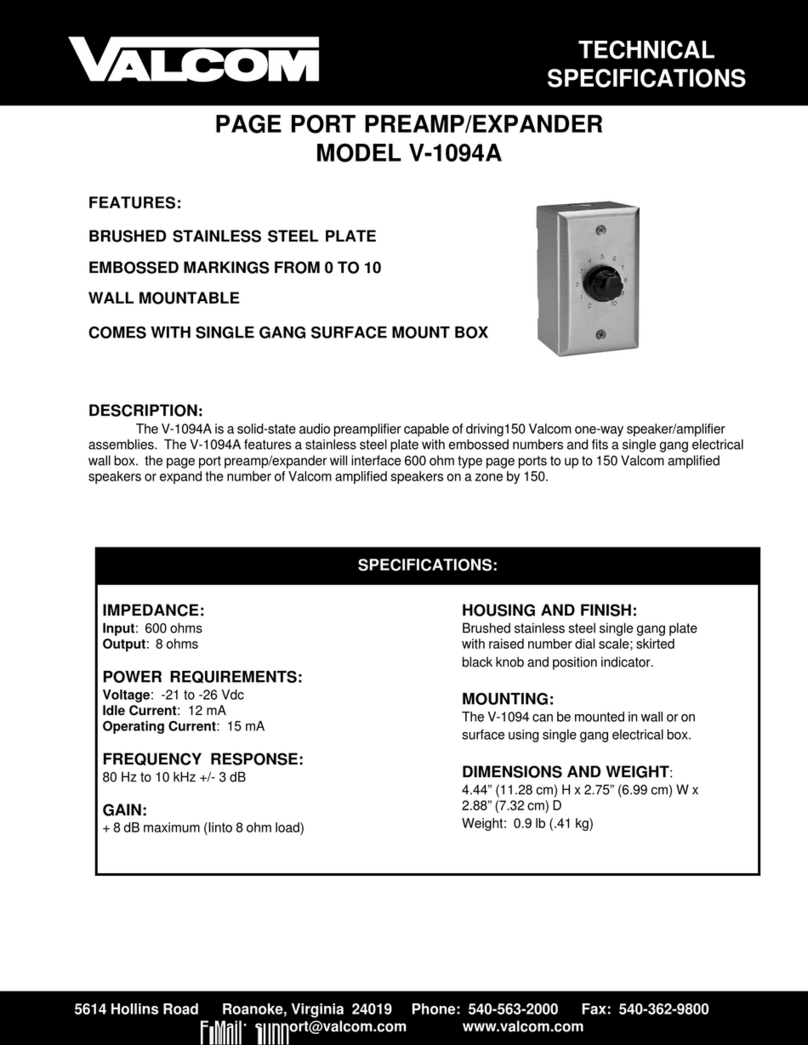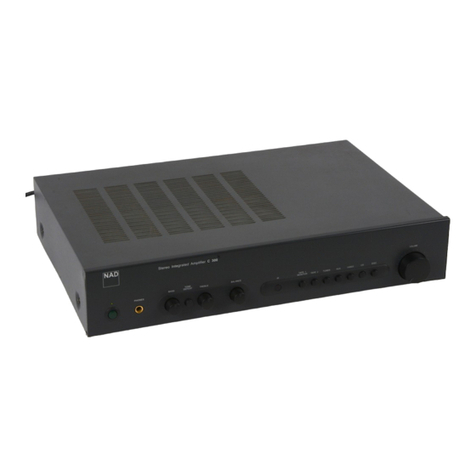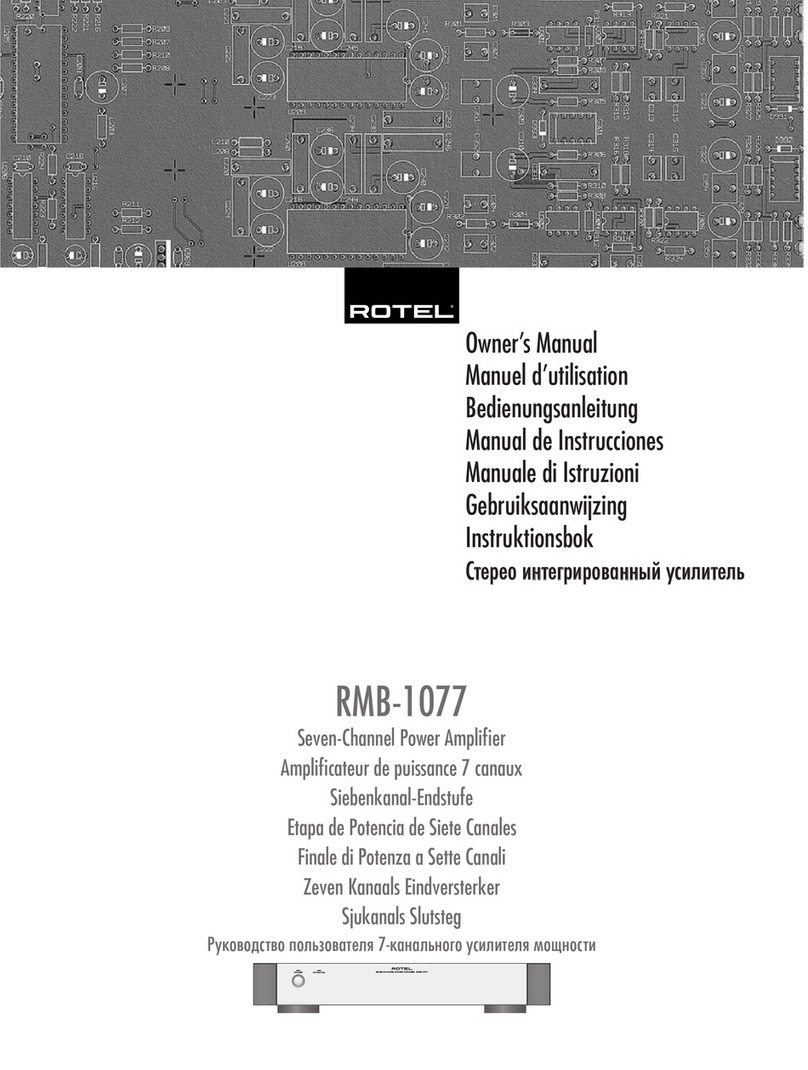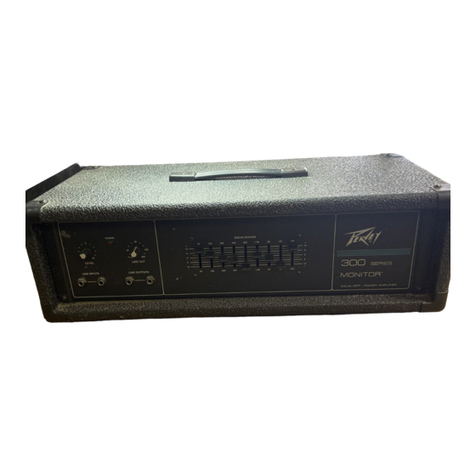9
X V-AMP
5. AMP/SPEAKER SIMULATION
4.4 Discarding an edited preset/
restoring a single factory preset
If you have edited a preset and find that you dont like the
edited version, simply choose a different preset to discard your
edits. You can restore a single factory preset by keeping TAP +
STORE depressed for longer than 2 seconds.
4.5 estoring all factory presets
Restoring all factory presets is done by keeping
TAP + STORE depressed for longer than 2 seconds while you
power up the X V-AMP.
5. AMP/SPEAKER SIMULATION
The very heart of your X V-AMP is its amp/speaker simulation.
The X V-AMP makes it a childs play for you to choose one of the
legendary guitar amps, be it for brit pop, blues, heavy metal or
whatever. In addition, you can tailor the sound of the respective
amp to suit your ideas. On top of all that, you can even choose
digital effect and reverb types for your virtual amp. See chapter
6 EFFECTS PROCESSOR for more details.
When you turn on your X V-AMP, it automatically loads the last
preset selected. The LED ring around the FX/AMPS control
shows what amp has been selected. The corresponding LED
lights up. To select another amp simply turn the control.
To give you a better overview of the extensive range of amp
simulations on the X V-AMP, we have compiled the following
descriptions of the different types of amps.
CLASSIC CLEAN: Back in the 80s, the Roland JC-120 was
the preferred sound of Buzzy Feiten (guitarist with the Dave
Weckl Band). The unique quality of this transistor amps sound is
the way its brilliance cuts through any mix. It is ideal for the New
Wave sound of the 80s that is making a come-back today. By
the way, the JC-120 was also popular among Fender Rhodes
pianists.
V-AMP CRUNCH: This amp is ideal for modern blues or jazz.
Its sound is not too subtle, but not in-your-face eitherits
crunchy, thats all.
BRITISH PLEXI: This amp model, created by leaning closely to
a 59 Marshall Plexi 100-Watt amp, is particularly well suited for
creating clean sounds. The amp was used by Jimi Hendrix, Eric
Clapton and Jeff Beck.
BRIT CLASS A: This simulation is modeled on the Vox
AC 30. This amp was originally designed in the 60s when
guitarists wanted amps with enhanced brilliance, a feature that
Vox successfully implemented by means of revolutionary bass
and treble controls. Brian May and U2s The Edge are probably
the best-known users of this sound.
BRIT HI GAIN: Compare this model with a Marshall JCM 800.
Although the original was renowned mainly for its distorted
sounds, this amp also sounds very good with low gain settings.
Its good at reproducing Steve Ray Vaughans and Michael
Landaus sounds. In distortion mode it sounds like Gary Moore in
his early days, but its also good for heavy metal.
SAVAGE BEAST: Engl is well-known for amps that really cut
through. The Savage 120 in particular has built up a large
following among guitarists. For some time now Ritchie Black-
more has been a major endorser of this German company, and
Randy Hanson, the best Hendrix since Jimi, also swears by this
amp. The unique feature of the Savage is its extreme power and
is therefore highly popular with heavy metal guitarists. Silent
Force/Sinner guitarist Alex Beyrodt has been an enthusiastic
Engl user for years. An amp for making yourself heard!
NUMETAL GAIN: This model is based on a 1994 Mesa Boogie
Dual Rectifier Trem-O-Verb featuring a modern, high-gain sound
that also comes over well in a band context.
MODERN GAIN: Here, the tone control is post-gain, allowing
the extremely distorted sound to cut through the mix. The MODERN
HI GAIN sound is ideal for playing grunge, but is also used by
guitarists such as Steve Vai and Joe Satriani. Among others,
Steve Lukather, Nuno Bettencourt and Steve Vai have all
popularized the Soldano sound. If youre playing a Gibson
Les Paul, MODERN HI GAIN sounds best when you turn down
the volume control on the guitar a little.
BLACK TWIN: This simulation was modeled on a Fender
Blackface Twin from 1965. In the 60s this amp was used by
jazz, country and even rock guitarists. What was unique about
it was that it was exceptionally loud and was therefore mainly
used for live performances. The secret of the Blackface Twin
was that although you could play it extremely loud, the distortion
remained relatively low.
ULTIMATE GAIN: From clean to brutal hi-gain, this brute
covers the entire range. The ULTIMATE V-AMP is basically a
souped-up rectifier amp.
TWEED COMBO: This was Jeff Becks favorite when he
recorded the albums Blow by Blow and Wired. This amp was not
actually designed for heavy distortion, but due to its low power,
it is ideal for uncompromising overdrive sound.
TWEED BASS: This virtual amp is modelled on the Fender
4 x 10 Combo. Originally designed as a bass amp, it soon became
a standard amp of blues legends such as Steve Ray Vaughan or
Billy Gibbons due to its characteristic distortion. As you would
expect, it packs a solid punch in the bass range, but is still
flexible enough in the mid and treble ranges.
SCREAMER: Having been around since the beginning of the
80s, the Ibanez Tube Screamer TS808 has pretty much achieved
cult status. It has the reputation of being the ultimate classical
overdrive/treble booster floor pedal, and is associated with mighty
lead sounds, even though it offers rather modest distortion. Its
secre is that it knows better than other floor pedals how to
squeeze the very last bit out of the amp to which it is connected.
If you hook up a decent tube amp to your X V-AMP (e. g. the
BEHRINGER AC112), with this simulation you can authentically
reproduce the effect of the tube screamerall this without
dishing out too much cash to own a cult piece of equipment.
EL RATON: The Rat from ProCo was also a distortion pedal
similar to the tube screamer, and it also came around about the
same time, but its basic sound and applications couldnt be more
different. As the name suggest, the ra is all about aggressive
distortion from the pedal itself, and the TS808 is more about
unobtrusive overdrive in the amp further down the chain. With
the rat simulation, you have the metal sound of the early 80s
totally covered.
AMP BYPASS: In this setting, no amp simulation is selected.
This makes it possible, for example, to play through an external
guitar preamp and only use the effects.
ACOUSTIC: A guitar with steel strings miked with a dynamic
microphone is simulated here. While piezo pickups have the
tendency to make the sound rather hard, using a mic makes the
sound much more evened-out. Of course, the feedback typical
for miking acoustic instruments is no longer an issue.
Englä, Fenderä, Gibsonä, Ibanezä, Marshallä, Mesa Boogieä, Rolandä, Soldanoä, Voxä
ProCoä, Tube Screamerä, The Ra ä as well he names of musicians and bands are regis ered
rademarks of heir respec ive owners and are in no way associa ed wi h BEHRINGER. The brand
names appearing here are men ioned solely o describe he charac er of sounds and effec s
crea ed in he X V-AMP.


